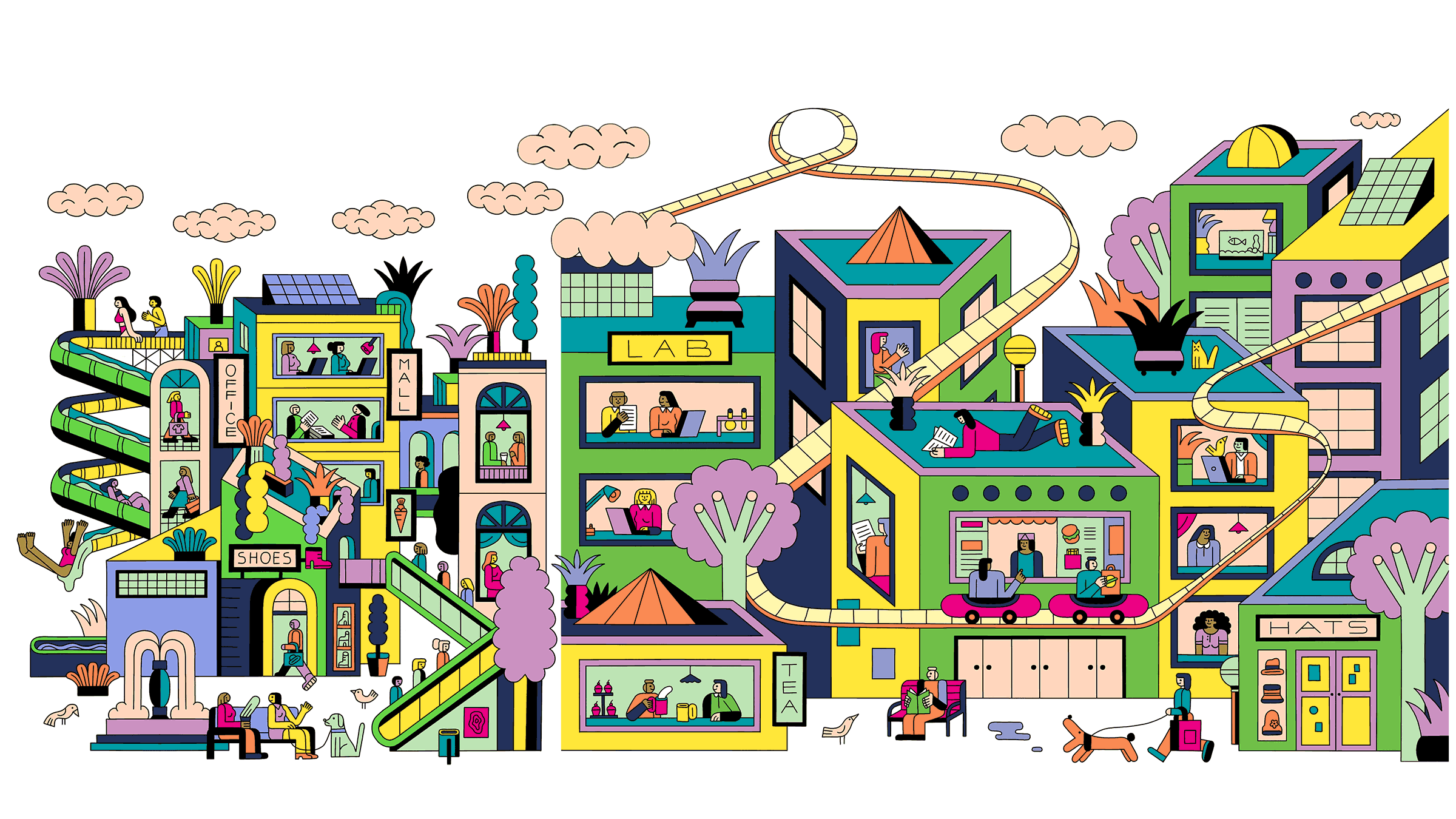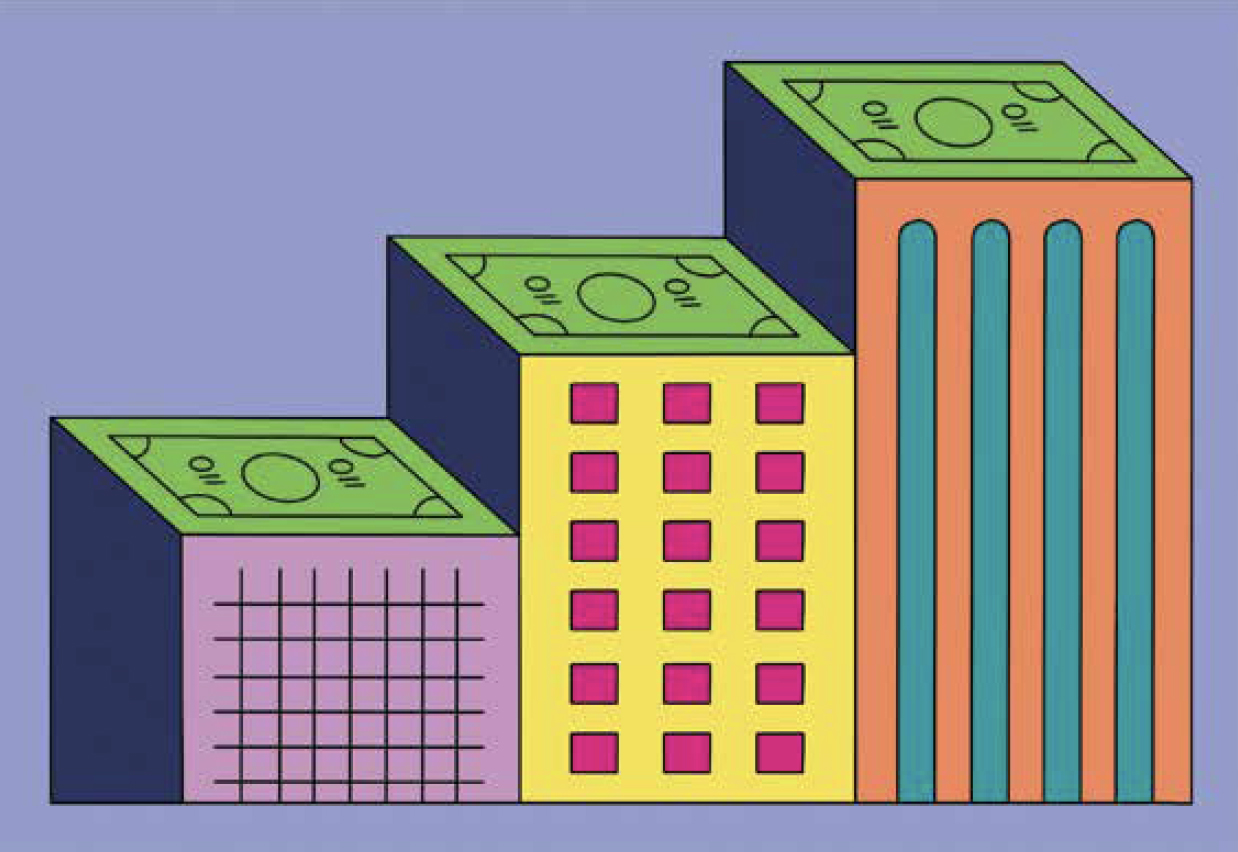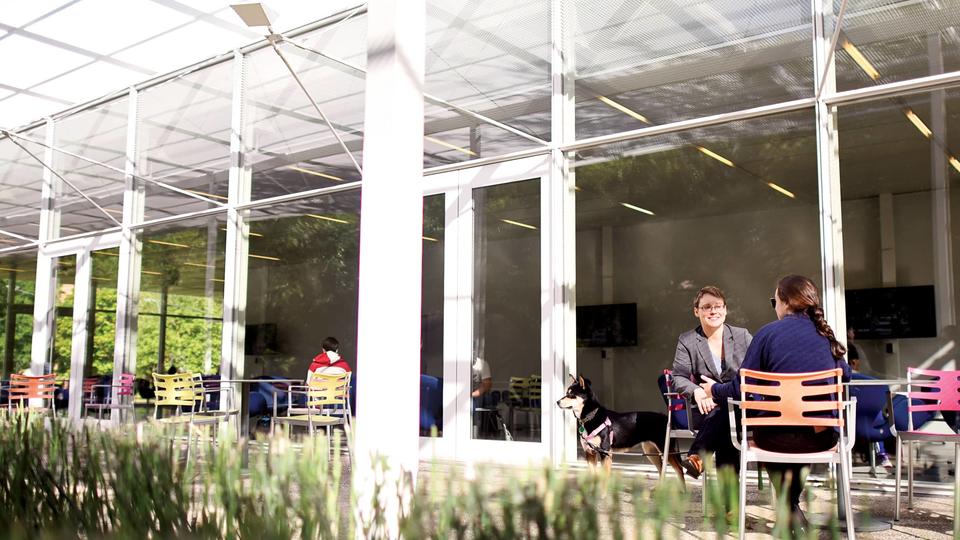
Real Estate's Wild Ride

The past two years have been a rollercoaster for real estate. Alumni in the industry share what they've seen — and what they expect in the year to come.
Few industries have been as subject to the wild ups and downs of the ongoing COVID-19 pandemic as the world of real estate. Almost two years into the pandemic and the real estate business has seen itself transformed again and again as the world responds to each new phase of the pandemic.
 It’s never been a better time to sell a house — but buying one is another matter. Vaccines brought workers back into offices and workplaces — and new COVID variants sent them back home. Retail businesses and restaurants weathered municipal mandates and the changing preferences of customers. Industry trends that might have taken five to 10 years to play out now happen in a matter of months.
It’s never been a better time to sell a house — but buying one is another matter. Vaccines brought workers back into offices and workplaces — and new COVID variants sent them back home. Retail businesses and restaurants weathered municipal mandates and the changing preferences of customers. Industry trends that might have taken five to 10 years to play out now happen in a matter of months.
The year ahead seems to hold more of the same — cautious optimism, steady growth, and the need to quickly adapt to shifting circumstances. That’s according to the Rice Business alumni working in real estate markets around the world, who shared the trends they’re watching in 2022.
‘The New Normal’
Rising prices and intense competition have characterized the residential real estate market during the last two years and Brandi Downey-Wade ’11, a broker and owner of DiverseCity Realty in Houston, expects those trends to continue in 2022.
“The residential market is very strong in Houston and Austin,” she says. “Things are normalizing a bit; at this time last year you might have a home go under contract within two days and with multiple offers, and now properties are sitting closer to 30 days.” There still isn’t enough inventory, though, and with demand outpacing new construction, the market remains heavily in favor of sellers.
“I had a client who’s been looking in the Cypress area. She put in an all-cash offer, $25,000 over asking price, and the offer was not accepted,” she says. In the last year, the median sale price for a home in Houston has increased by almost $100,000, according to Downey-Wade. “It’s great for folks in real estate and great for sellers, but for home affordability, it’s tough.”
Downey-Wade’s commercial clients are having an opposite experience, however. “There’s a ton of (commercial) inventory … coming to the market,” she says. And while office space remains unpredictable, she’s seeing the boundaries between retail and office space blur. An online retailer may simply need an office space for logistics and shipping, while a small business may want a storefront to attract clients.
The one thing Downey-Wade doesn’t expect in 2022 is a crash. The pace of growth may slow, but there won’t be a reversal. “With Texas growing as rapidly as it is, these prices are our new normal.”
Emerging Industries
Though the pandemic has changed where and how we work, Brandon Houston ’09, a principal at Trammell Crow Company in Atlanta, remains bullish on office space — particularly in the life-sciences industry, which covers everything from biopharmaceuticals to medical device research and manufacturing.
“We’re breaking ground on a large life-sciences project here in Atlanta in the next couple weeks — 370,000 square feet, a spectacular building. The opportunity is here to make a market,” Houston says. While cities like Boston, San Francisco and San Diego are seen as the core markets for med-tech companies, Houston believes Atlanta is about to have its moment.
“There are about 150 million square feet of life-sciences space across the country,” according to Houston, and he expects that number to double in the next decade. As the home of the Centers for Disease Control, Georgia Tech, Emory University and others, “Atlanta has all the fundamentals” to become a major life-sciences player.
 That emerging market is going to create growth in other areas, Houston says. He expects increased development in 2022 as more people move to Atlanta for work. “I think there’s still some concern about whether people will get fully back into the office, and what that looks like from a remote or hybrid-work perspective, but I still believe there will be a return to the office,” he says. “More companies are choosing to relocate to the south … and I see Atlanta being a winner in office space in 2022 and beyond.”
That emerging market is going to create growth in other areas, Houston says. He expects increased development in 2022 as more people move to Atlanta for work. “I think there’s still some concern about whether people will get fully back into the office, and what that looks like from a remote or hybrid-work perspective, but I still believe there will be a return to the office,” he says. “More companies are choosing to relocate to the south … and I see Atlanta being a winner in office space in 2022 and beyond.”
The life-sciences industry will be particularly beneficial for office space.
“Life sciences folks can’t work from home; they’ve got to be in the office, so I don’t see a prolonged pandemic impacting life sciences at all, other than to spur more growth and development in that sector.”
The one challenge Houston sees in 2022? Finding space for industrial developments. “Atlanta is the fifth-largest industrial market in the country, and we cannot find industrial land suitable for development,” he says. “It’s scarce, and the lots are being gobbled up by developers just like us.”
Hungry for Connection
Like office space, shopping centers could see a comeback this year, according to Matt Okmin ’18. Okmin is a partner at Whitestone REIT, a Houston-based commercial real estate company focused on small shopping centers in high-income neighborhoods. “Our outlook for 2022 is pretty good,” Okmin says. “Our tenants have come back strong.”
Agility and adaptability have helped those tenants weather the pandemic, according to Okmin. For some, that meant moving restaurant seating out to the shopping center’s parking lot during the early days of the pandemic. For others, it meant finding new ways to work with customers. “A client in San Antonio has a restaurant that did about 3 percent of its business in takeout before the pandemic. It just wasn’t their model and they were doing pretty well,” he says. “Because of the pandemic, they figured out how to bring their takeout business to about 30 or 40 percent. They’re a very agile and forward-thinking company.”
 While the future of COVID presents a host of unknowns, Okmin is optimistic. “People are figuratively and literally hungry to get out there. So far, we’re seeing that people are still going out. In Austin and San Antonio, people seem to be OK” with mask requirements.
While the future of COVID presents a host of unknowns, Okmin is optimistic. “People are figuratively and literally hungry to get out there. So far, we’re seeing that people are still going out. In Austin and San Antonio, people seem to be OK” with mask requirements.
Outdoor community shopping centers like Whitestone’s are particularly able to meet the customer demands changed by the pandemic.
“We give people a place to connect, with open spaces for safe social distancing, to meet with friends.”
Experiences Over Items
That desire for in-person experiences is driving the growth of malls and shopping centers in China, too, according to Curt Lam ’94, a general manager with Wanda Group Hong Kong.
“In the last five years, we’ve seen tremendous pressure on physical retail malls and commercial space,” Lam says. Massive online retailers like JD.com and Alibaba have upended the Chinese retail market. Their outsized portion of the retail market, combined with integrated digital payment apps like WeChat Pay and Alibaba’s own Alipay, have squeezed traditional retail businesses.
 Commercial real estate companies like Wanda Group have responded by shifting their focus to offering unique experiences rather than simply selling products. In China, that means you’re likely to see a virtual travel park or an indoor ski resort attached to a typical shopping mall — one of Wanda Group’s malls features a ski resort with four slopes and a 66-meter vertical drop. A day out might include a visit to a salon, lunch at a restaurant and a few hours of skiing. Customers less inclined to speed downhill could opt for a virtual sightseeing experience, viewing immersive scenes of other countries and famous locations while sitting in seats that move up and down, and even rotate.
Commercial real estate companies like Wanda Group have responded by shifting their focus to offering unique experiences rather than simply selling products. In China, that means you’re likely to see a virtual travel park or an indoor ski resort attached to a typical shopping mall — one of Wanda Group’s malls features a ski resort with four slopes and a 66-meter vertical drop. A day out might include a visit to a salon, lunch at a restaurant and a few hours of skiing. Customers less inclined to speed downhill could opt for a virtual sightseeing experience, viewing immersive scenes of other countries and famous locations while sitting in seats that move up and down, and even rotate.
“We’ve also seen malls include water parks — real, sizable indoor water parks — combat-themed parks, escape room parks. They know they can’t compete with JD.com or Alibaba [by selling physical products],” Lam says.
Lam expects physical retail malls to continue doing well in China in 2022. The omicron variant may have slowed down business, but Lam believes that consumers’ desire for in-person connections and experiences — and government scrutiny on the big online retailers’ anti-competitive — are positive indicators for commercial malls.
“We’re promoting our malls as community centers — places where teenagers and older folks can come in and wander around. You can sit at a restaurant and enjoy the air conditioning or enjoy an auto show. And once people are there, it creates foot traffic, so there will be spending,” he says.
And when the pandemic ebbs, Lam predicts an even stronger resurgence. “I think there’s a pent-up demand for gathering. That’s another positive element in supporting a stronger case for physical or in-person retail. I think we’re going to see a bounceback across the world once the pandemic flows out. But I think the bounceback will be stronger in China than elsewhere.”


